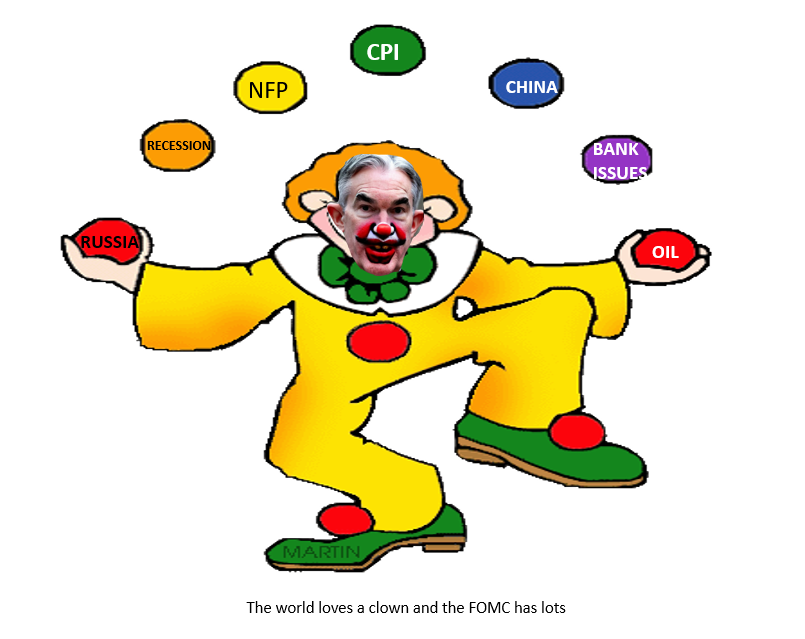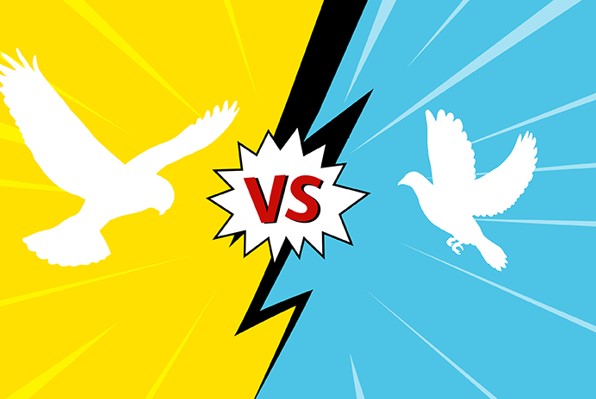
By Michael O’Neill
The FOMC raised rates by 25 bps as expected but failed to announce a pause in the hiking cycle as many analysts anticipated.
But nobody does wishy-washy better, and Fed Chair Jerome Powell was in fine form.
In response to a question from the New York Times about whether the statement should be interpreted as a suggestion that the Committee is ready to pause interest rates, Mr Powell replied, “A decision on a pause was not made today.”
He then pointed out a difference between the March and April statements.
The March statement said, “The Committee anticipates that some additional policy firming may be appropriate in order to attain a stance of monetary policy that is sufficiently restrictive to return inflation to 2 percent over time,”
That line was replaced with “The Committee will closely monitor incoming information and assess the implications for monetary policy.”
He called it a “meaningful change” because the Committee no longer “anticipates” but will be driven by incoming data.
Mr Powell disagreed with the Fed staff economists view for a mild recession in 2023. He said his view is “that the economy will continue to grow at a modest rate this year.” He added that Committee members and staff disagreeing on an economic outlook is a “good thing,” which to a cynic means “they can say what they want, but I have a vote.”
Mr Powell said the Committee did not decide to pause at this meeting. Maybe not, but traders have the odds of an unchanged result in June at 99.65%.
The CME Fedwatch tool also suggests that there is a 45.5% chance of a rate cut in July and an 84% chance of a rate cut in September.
The FOMC decision opened the door to endless debate about whether or not US interest rates have peaked.
The Fed’s assertion that the next decision will be data dependent (shouldn’t all decisions be based on data?) will elevate the importance of the next round of top-tier economic reports beginning with the May 5 nonfarm payrolls report.
A flock of Fed officials will chatter up a storm in the coming days and argue for and against further rate hikes.
The doves will forecast inflation to drop sharply, and will cite falling inflation from lower energy costs. The hawks will point to sticky core inflation and the tight labour market as reasons to tighten monetary policy further.

Source: Firstfoundationinc.com
The Fed’s decision gives the Bank of Canada (BoC) reason to stay the course and leave rates unchanged. But Governor Tiff Macklem and colleagues do not need to decide until June 7 forcing traders to pay close attention to the April inflation data, due May 16.
A hotter than expected print could trigger a rate hike, especially if Canada gets another robust employment report on May 5.
It happened in Australia.
The RBA was expected to be on hold after they left rates unchanged in April. Instead, they hiked 25 bps this week.
RBA Governor Philip Lowe justified the increase because the labour market was very tight. Even though he acknowledged inflation may have peaked, he claimed it would be some time before inflation returned to its target range.
Canada and Australia share many economic attributes and the RBA and BoC statements are often very similar.
It would not come as much of a surprise if the BoC adopted a similar stance.
The Fed’s May 3 monetary policy decision did not give traders a clear market direction. This suggests FX trading ranges will be similar to those in the last six weeks.
If so, USDCAD will trade in the well-defined 1.3300-1.3700 range until the next FOMC.
West Texas Intermediate oil prices are in the process of retracing the entire post-Opec production cut rally, partially due to increased global recession fears. Traders are concerned that the prospect of higher interest rates in Europe, the UK, Australia, and New Zealand will exacerbate a global economic slowdown, at the same time China’s post-pandemic economic recovery has been underwhelming.
However, the risks of a global slowdown should already be priced-in, which means the latest price drop may be more related to stale positions being cut and stop-loss selling in thin pre-FOMC markets. US crude inventories have seen sharp drawdowns. The Energy Information Administration reported crude stocks fell for the third week in a row.
If the Fed is about to pause and begin cutting interest rates, the ensuing broad US dollar weakness would argue that a rebound in WTI is likely. It would also reinforce USDCAD resistance in the 1.3700 area.
A Fed pause would reduce Canada/US 2-year and 10-year interest rate spreads. They have widened in the past two weeks and narrower spreads will also weigh on USDCAD.
The pause, hike, cut debate will be the dominant factor as traders juggle how ever-changing risks will impact Fed policy.





